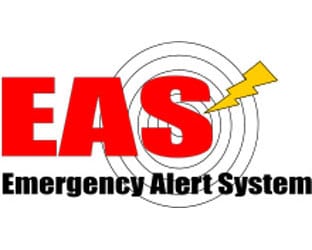The Public Safety and Homeland Security Bureau of the FCC on Friday released its official report on the Sept. 28, 2016 Nationwide EAS Test.
Was it a success?
Over 20,000 broadcasters, cable operators, and other EAS Participants participated in the 2016 Nationwide EAS Test, totaling 95% of EAS Participants — a 25% improvement over the 2011 test.
The vast majority of these EAS Participants received and retransmitted the National Periodic Test (NPT).
The results further show that the Integrated Public Alert and Warning System (IPAWS) version of the alert delivered superior digital sound and successfully delivered non-English alerts to those EAS Participants that wished to distribute them.
The primary purpose of the 2016 Nationwide EAS Test was to assess the reliability and effectiveness of FEMA’s IPAWS distribution architecture, which delivers content-rich EAS alerts over a secure internet gateway directly to EAS participants.
The IPAWS test message specifically included English and Spanish versions of the test alert, high quality digital audio, and text files to be used to create an accessible video crawl.
The secondary purpose of the 2016 Nationwide EAS Test was to assess the effectiveness of measures the Commission, its Federal partners, and other stakeholders took to address the problems uncovered by the 2011 nationwide EAS test.
“Overall, the 2016 Nationwide EAS Test demonstrated that the Internet-based distribution of alerts via IPAWS has modernized the EAS and greatly improved the quality, effectiveness, and accessibility of EAS alerts,” the Bureau declared.
What are the suggested next steps to continue to improve the EAS?
The Public Safety and Homeland Security Bureau recommends that the Commission take the following measures to improve the quality of information available in emergency alerts:
- In light of the additional capabilities offered by IP-based alerts, the Commission should facilitate and encourage the use of IPAWS as the primary source of alerts nationwide, while preserving over-the-air alerting as a redundant, resilient, and necessary alternate alerting pathway.
- Commission should examine how to improve and expand the content included in IPAWS alerts to bridge the gap between today’s alerting systems and future next generation alerting. For example, the Commission, its Federal partners, and other EAS stakeholders should encourage and facilitate the expanded use of multiple languages, text files, and other mechanisms to create EAS alerts accessible to a greater portion of the public.
To view the full report, please click here:





